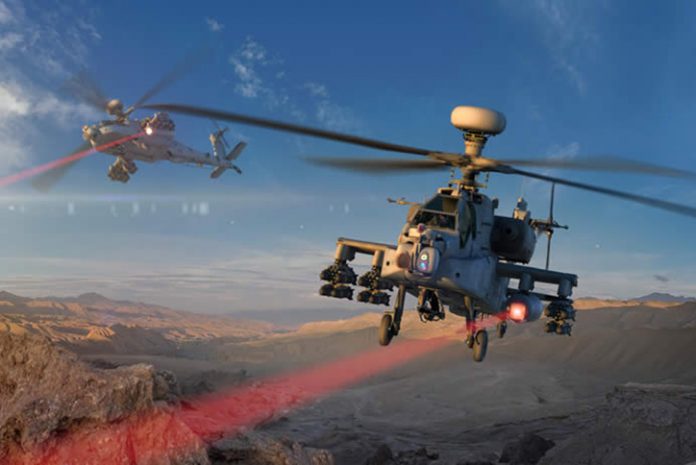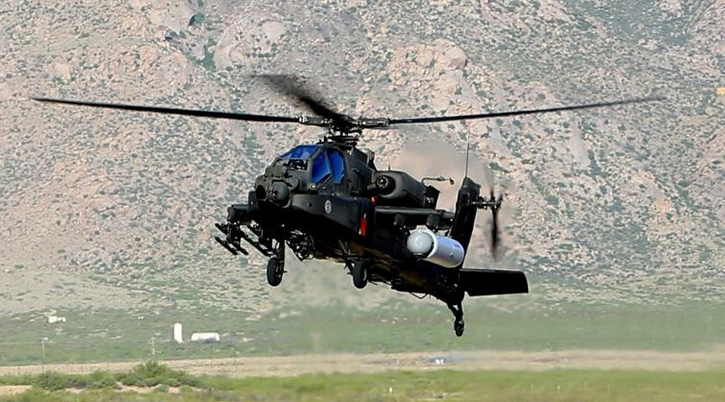
A high-energy laser mounted on an Apache AH-64 attack helicopter acquired and hit an unmanned target during a recent firing test at the White Sands Missile Range in New Mexico. The test was conducted by Raytheon and the U.S. Army Apache Program Management Office, in collaboration with U.S. Special Operations Command.
For the test, Raytheon coupled a variant of the Multi-Spectral Targeting System, an advanced, electro-optical, infrared sensor, with a laser. The MTS provided targeting information, situational awareness, and beam control.
The system tracked and directed energy on a stationary target at a slant range of 1.4 kilometers. It was the first time a fully integrated laser system successfully shot a target from a rotary-wing aircraft over a wide variety of flight regimes, altitudes, and airspeeds, proving the feasibility of laser attack from Apache.

The data collected from the test, including the impact of vibration, dust and rotor downwash, will help shape future high-energy laser systems.
Modern, solid-state lasers are more useful for military applications as they become more powerful and compact. Podded versions such as the one tested on the Apache could be used on other helicopters in the future, enabling special operations forces and other operators to use kinetic effects with higher precision and lower risk of collateral damage.



















